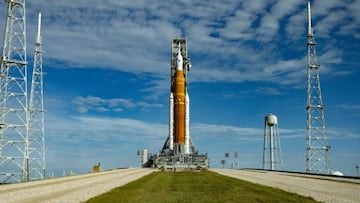When will NASA’s Artemis 2 mission be launched?
NASA is once again headed to the moon with Artemis 2: when will the launch take place?

After the successful launch of Artemis I, the unmanned ship sent to orbit the moon; many are looking forward to the launch of Artemis II, which will send four astronauts on a similar mission.
The second mission is currently planned for May 2024, but after seeing the launch of the Artemis I delayed on two occasions, this date could be pushed back.
The third mission will send four astronauts to the moon’s surface, two of which will do a real moon walk to collect data needed for future trips. This trip, planned for 2025, will be the first trip to the moon since 1972 and is a joint effort between NASA, European Space Agency, Japan Aerospace Exploration Agency, and the Canadian Space Agency.
What will the Artemis II mission accomplish?
The purpose of the mission is to send astronauts out of low-earth orbit to ensure the ships are tested and ready to send four people to the moon a few years later.
The Artemis program has a few significant objectives, according to NASA, that include expanding our understanding of lunar science and exploring the “economic benefits” of our nearest space object. The US space agency is also eager to “build a global alliance and explore deep space” with key allies. Down the line, NASA hopes to use the experience as a stepping stone to greater space exploration, including a manned trip to Mars.
What economic opportunities could lunar exploration provide?
NASA and its international partners are eager to use the Artemis program to “enable a growing lunar economy by fueling new industries, supporting job growth, and furthering the demand for a skilled workforce.” Precisely what is meant by this in practice remains unclear. One idea tossed around in space exploration circles is the idea of lunar tourism, but finding a proof of concept that would be economical at a commercial scale is not currently plausible. Another idea relates to the idea that there could be minerals and elements on the moon that could lead to what NASA calls a “lunar gold rush.”
A 2015 infographic produced by the space agency says that the moon could become a source of rare earth metals and reduce dependence on China, which controls ninety percent of production. One of the main uses for these materials is renewable energy technology to reduce our dependence on fossil fuels. Ironically, the carbon footprint associated with mining the moon and transporting materials back to earth is not considered.
The bizarre graphic also calls attention to the 1967 UN Outer Space Treaty to which parties agreed that “no nation can claim ownership of the moon” but that some “space law experts question whether the treaty could percent private ownership.” It is hard to imagine that the logic that brought countries together to ensure no one country could claim ownership over the moon would not apply to private companies looking to exploit the resources for their financial benefit.






